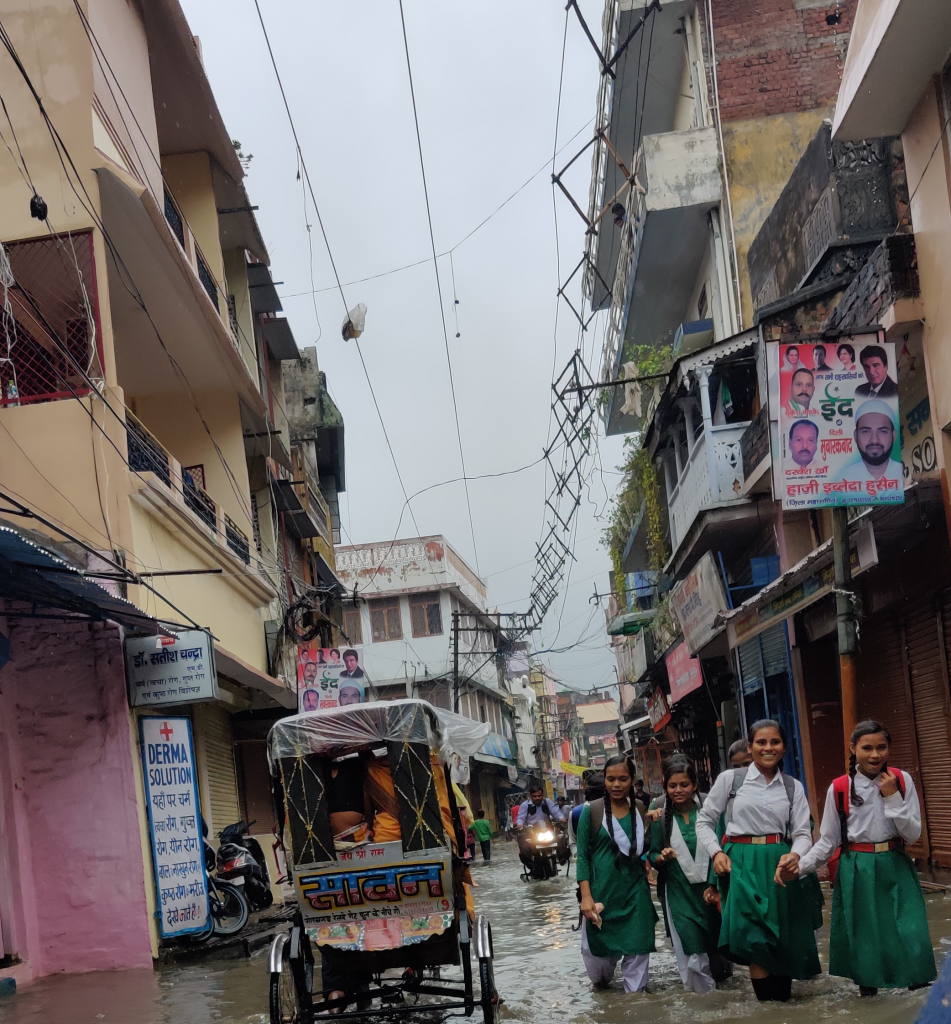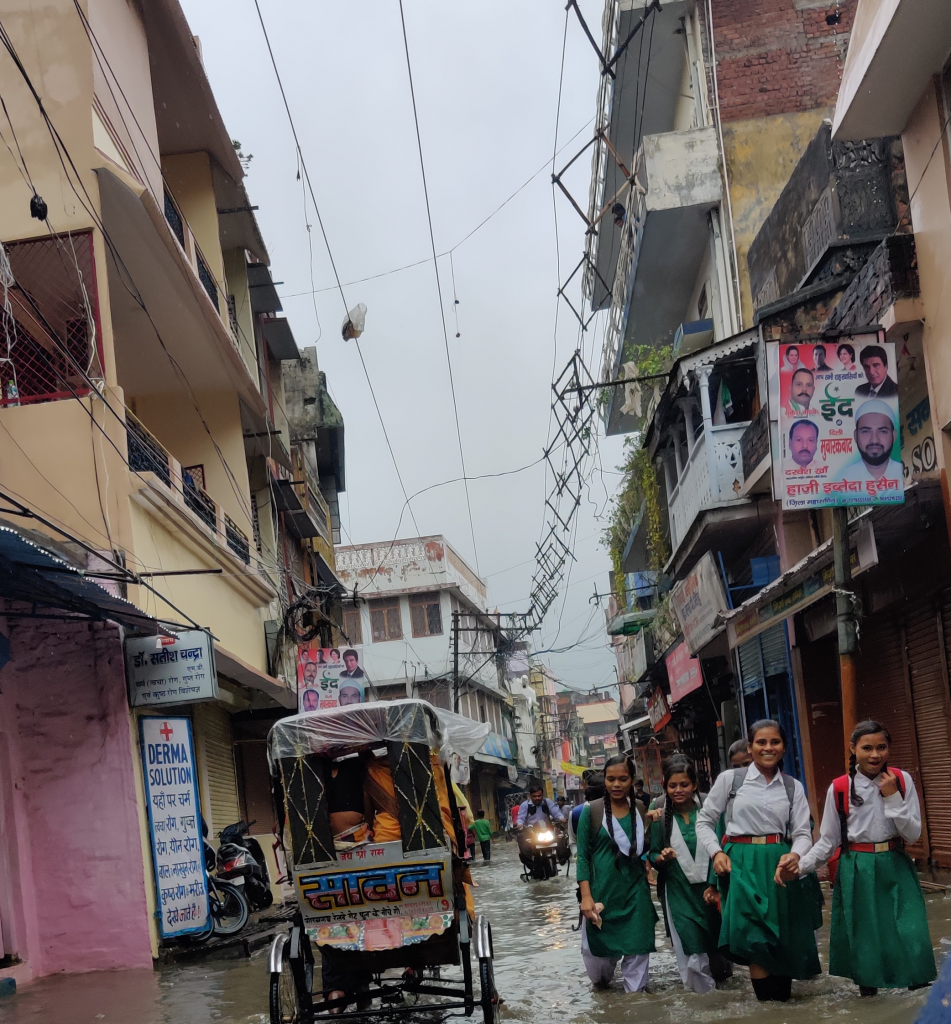
The climate change and Covid-19 space has been abuzz with the narrative of ‘Nature is Healing’ centred around the drastic decrease in air pollution across hotspots in China, India, Europe, and the United States. The positive impacts seem to be cascading through articles with fake news of dolphins returning to the Venetian Lagoon, people in Shanghai being able to see the Tibetan Plateau, … This over-enthusiastic narrative, while very clearly spelling out the impact of human action on nature, leaves out a key issue of rendering large populations more vulnerable to climate change in the face of Covid. For those who live in some the most climate-sensitive parts of the world such as Asia, communities are already grappling with poverty traps set up by life in a ‘lockdown’(such as the case of stranded migrants in India) and find their ability to ‘respond’ to the double catastrophes of Covid-19 and climate change heavily compromised.
The world is seeing a ‘global’ crisis of interconnected financial, social and institutional ecosystems on such an unprecedented scale for the first time since WW2. However, does Covid-19 present an opportunity to make a case for collective action on transboundary issues such as climate change? We ponder upon four key questions:
1) Climate Action vis-à-vis the Covid response: Will Climate Change take a backseat?
As governments focus on the Covid response, unsurprisingly climate change as an issue might become less relevant through 2020-2022. Years that are critical for keeping global warming to 1.5 degrees Celsius and bringing down global emissions by 2030. COP-26, which was scheduled for November 2020, has been postponed to 2021. As per UNEP’s 2019 Emission Gaps Report, we are already behind our 2030 targets. Covid-19 seems to have the potential to derail climate ‘quick-wins’ and leaving governments with ‘governance fatigue’ reducing political will and bandwidth to deal with yet another crisis as ‘governments and economies’ heal.
This financial quarter saw the greatest financial and trade slump since the Great Depression, exacerbated by a 60% oil price slump. The global economy is projected to contract by 2.4% to 1% (WTO). This brings us to the question ‘what’ and ‘which’ governments across the world will be willing to commit both financially and in terms of capacity to climate change.
2) Green Recovery: How green, how fast and which countries are going green?
The recovery process most countries will embark upon will determine how successful we are in keeping climate conversations and ambitions on track for a 1.5-degree world. Most countries in the Global North led by the European Union are aiming, at least rhetorically, for a ‘green recovery’ or building back better’ with renewable energy and low-carbon mobility being easy wins. How ‘green’ these green fiscal packages turn out in reality, will be key for a deeper transition and to escape existing carbon lock-ins.
Different crises have seen different impacts on governance but also on emissions. Disasters have often led to more extractive/ manufacturing booms making it worse for the climate. The Asian financial crisis of 1997 saw an increase in Malaysian and Indonesian extraction of palm oil. The climate conversation therefore runs the risk of governments capitalising on cheap oil prices and even cheaper coal prices to fuel their recovery pathway. For climate sensitive and developing nations such as India, a stimulus package for manufacturing and extractive industries might be an essential way of keeping 60 million poor in India out of debt traps but through such recover measures it will also be exacerbating carbon lock-ins that might undo all the pro-climate action work done in the country till date. Thus a ‘green recovery’ might not be feasible or desirable for all countries.
3) Dominant emission narrative missing the human face: What does this mean for building resilience of the poor?
Air pollution and carbon emissions have been on a decline as economies and individuals are living under varying degrees of ‘Lock-Down’ with travel being brought to a halt. The International Energy Agency has forecasted the CO2 impact of the crisis, suggesting emissions could fall by 8% this year. “The International Energy Agency (IEA) says that the world will use 6% less this year – equivalent to losing the entire energy demand of India” . While this is all good news and has important learnings for global leaders, these are by no means permanent. The financial crisis of 2009 which saw a similar decease in emissions at the time, saw roughly a 6% emission increase once the economy picked up (CICERO 2011).
A key concern would be to see beyond the ‘emissions narrative’ and understand what this means for existing climate vulnerability and coping capacities of communities given the predicted economic slow–down and fragile governance systems faced with covid-19. Potentially, by the end of 2020, 49 million people could be pushed into poverty across the climate-sensitive and vulnerable regions of Asia and Sub- Saharan Africa. Covid-19 is also seen as the cause for the biggest increase in global poverty in since 1998 according to the World Bank’s recent estimates. Living with a lock-down for millions across South and South-East Asia has meant a massive loss in wages with unemployment on the rise and a ‘payroll pandemic’. Climate impacts and natural shocks and stressors have not stopped because of Covid 19 as we see Bangladesh, India and Myanmar wait for Cyclone Amphal to make landfall, leaving governments to realize that the poor and vulnerable are left without financial and social buffers to cope with climate impacts. Practitioners therefore need to look beyond the current positive emission drops and euphoria and put back the human face to this catastrophe and the climate narrative.
4) Micro-changes and transitioning norms: What do we need to do to make these behaviours stick?
New behaviours and habits are being formed in lockdown especially in carbon intensive sectors such as transport and mobility. Consumption patterns are also changing; with many supply-chains being hit a greater focus is on ‘buying what is locally and easily available’ reducing the carbon footprint of numerous products in the consumer retail sector (including food, apparel etc.).
‘Tele-working’/ remote working, the norm in the past 40 days- 50 days for most countries in lockdown, has put forward a compelling case to reduce travel time and vehicular emissions from employees globally commuting to work. Work that can be done via calls negates the need for multiple business trips.
However, for all of these micro-changes and habits to transition into norms and these ‘positive’ emission saving behaviours to becomemore entrenched, governments and practitioners need to understand what ‘nudges’ to use to push individuals and corporations towards a more low-carbon lifestyle. With regard to low carbon mobility, Milan is already experimenting with cycling tracks, a recent survey in the UK conducted by AA Populus Poll showed that “of nearly 20,000 drivers 22% aimed to drive less after lockdown” if such public perceptions and behavioural insights are used to model new behaviours relating to consumption and mobility patterns, Covid-19 will have provided an opportunity to re-think numerous ‘lock-ins’.
In conclusion, we currently see a great deal of personal and collective action at the ground level. While this has come at a great cost, it has made it painfully clear that the world is interconnected and issues such as climate change or public health cut across development gains made in other sectors. The greatest learning therefore is that no one can prepare for climate change alone and in a silo, thereby increasing the need for collective and individual action!
